Ventas de Johnson & Johnson superan expectativas, compañía eleva previsiones para 2016
martes 19 de julio de 2016 08:09 GYT Imprimir [-] Texto [+]
(Reuters) - La compañía diversificada de salud Johnson & Johnson reportó el martes un aumento mayor al esperado de sus ventas trimestrales, impulsado por la fortaleza de sus negocios farmacéuticos.
Las acciones de la compañía sumaban casi un 3 por ciento a 127 dólares en las operaciones previas a la apertura del mercado el martes. Hasta el cierre del lunes, los papeles acumulaban un incremento de casi un 20 por ciento este año.
J&J, la primera gran farmacéutica estadounidense en reportar sus ganancias trimestrales, elevó sus pronósticos de ventas en el 2016 a un rango de entre 71.500 millones y 72.200 millones de dólares, respecto a la estimación previa de entre 71.200 millones y 71.900 millones de dólares.
Las ventas del fabricante de insumos médicos, medicamentos y productos para el cuidado de la salud subieron 3,9 por ciento a casi 18.500 millones de dólares en el segundo trimestre.
Los ingresos por productos farmacéuticos escalaron un 8,9 por ciento a 8.600 millones de dólares, debido a la creciente demanda del fármaco contra el cáncer Imbruvica y del anticoagulante Xarelto.
Las ventas de Remicade, el principal producto de J&J, subieron 6,7 por ciento, a 1.780 millones de dólares.
No obstante, las ganancias netas de la compañía cayeron a 3.997 millones de dólares, o 1,43 dólares por acción, desde la cifra comparable de 4.516 millones de dólares, o 1,61 dólares por papel.
Excluyendo ítems extraordinarios, J&J generó utilidades de 1,74 dólares por acción. Analistas en promedio esperaban beneficios de 1,68 dólares por papel sobre ingresos de 17.980 millones de dólares, según datos de Thomson Reuters I/B/E/S.
(Reporte de Natalie Grover
Martes 19/07/16 Inicios de casas
37 mensajes
• Página 2 de 3 • 1, 2, 3
Re: Martes 19/07/16 Inicios de casas
Economía china crece, pero a la mitad del ritmo previsto por el Gobierno: sondeo privado
martes 19 de julio de 2016 08:11 GYT Imprimir [-] Texto [+]
PEKÍN (Reuters) - La economía de China está creciendo, pero apenas a la mitad del ritmo estimado oficialmente, mostró el martes un sondeo privado entre gerentes de ventas.
La expansión china se desaceleró y ahora la economía avanza a una tasa baja pero estable, aunque un repunte importante en el crecimiento es poco probable este año, según el último índice de gerentes de ventas chinos (SMI por su sigla en inglés), publicado por World Economics.
El SMI subió apenas a 51,7 en julio desde 51,6 en junio, aunque se ubicó en un máximo para 2016. Al igual que los índices de gerentes de compras, las lecturas superiores a 50 marcan expansión en términos mensuales, mientras que las lecturas debajo de ese umbral señalan contracción.
La actividad de julio está levemente por encima del promedio de los últimos seis meses, dijo World Economics. El sector de servicios al consumidor tuvo mejor desempeño que las manufacturas y la industria pesada.
El viernes, China reportó oficialmente un crecimiento del 6,7 por ciento interanual en el segundo trimestre, un poco mejor de lo esperado y en línea con la expansión de los primeros tres meses del año, lo que respaldó la perspectiva de que la economía se mantiene estable. [nL1N1A104A]
Sin embargo, los datos oficiales muestran una continua debilidad en las exportaciones y una desaceleración en la inversión, lo que apunta a la pérdida de impulso en los próximos meses.
(Reporte de Elias Glenn; Editado en español por A
martes 19 de julio de 2016 08:11 GYT Imprimir [-] Texto [+]
PEKÍN (Reuters) - La economía de China está creciendo, pero apenas a la mitad del ritmo estimado oficialmente, mostró el martes un sondeo privado entre gerentes de ventas.
La expansión china se desaceleró y ahora la economía avanza a una tasa baja pero estable, aunque un repunte importante en el crecimiento es poco probable este año, según el último índice de gerentes de ventas chinos (SMI por su sigla en inglés), publicado por World Economics.
El SMI subió apenas a 51,7 en julio desde 51,6 en junio, aunque se ubicó en un máximo para 2016. Al igual que los índices de gerentes de compras, las lecturas superiores a 50 marcan expansión en términos mensuales, mientras que las lecturas debajo de ese umbral señalan contracción.
La actividad de julio está levemente por encima del promedio de los últimos seis meses, dijo World Economics. El sector de servicios al consumidor tuvo mejor desempeño que las manufacturas y la industria pesada.
El viernes, China reportó oficialmente un crecimiento del 6,7 por ciento interanual en el segundo trimestre, un poco mejor de lo esperado y en línea con la expansión de los primeros tres meses del año, lo que respaldó la perspectiva de que la economía se mantiene estable. [nL1N1A104A]
Sin embargo, los datos oficiales muestran una continua debilidad en las exportaciones y una desaceleración en la inversión, lo que apunta a la pérdida de impulso en los próximos meses.
(Reporte de Elias Glenn; Editado en español por A
- admin
- Site Admin
- Mensajes: 165587
- Registrado: Mié Abr 21, 2010 9:02 pm
Re: Martes 19/07/16 Inicios de casas
Los gráficos del día, 
.

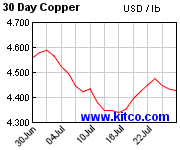
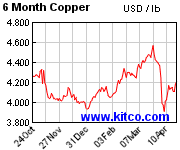
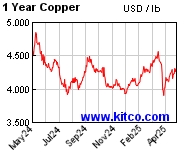
.

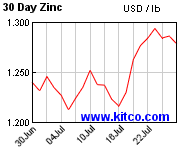
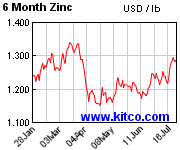
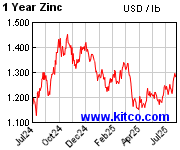
.

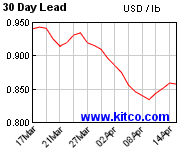
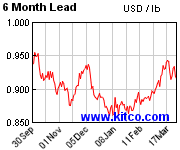
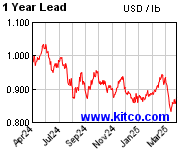
.
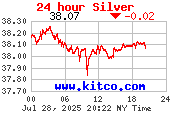
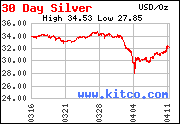
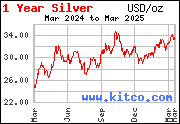
.
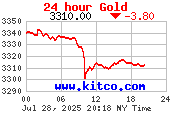
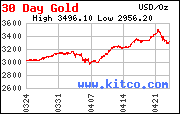
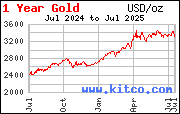
.
.




.




.




.



.



.
- Comodoro
- Mensajes: 980
- Registrado: Jue May 06, 2010 8:24 am
- Ubicación: LIMA
Re: Martes 19/07/16 Inicios de casas
18533.53 0.48 0.00%
Nasdaq 5041.28 -14.50 -0.29%
S&P 500 2161.56 -5.33 -0.25%
Russell 2000 1204.96 -2.95 -0.24%
Global Dow 2384.73 -14.41 -0.60%
Japan: Nikkei 225 16723.31 225.46 1.37%
Stoxx Europe 600 336.99 -1.71 -0.50%
UK: FTSE 100 6709.30 13.88 0.21%
CURRENCIES10:09 AM EDT 7/19/2016
LAST(MID) CHANGE
Euro (EUR/USD) 1.1018 -0.0057
Yen (USD/JPY) 106.38 0.22
Pound (GBP/USD) 1.3128 -0.0127
Australia $ (AUD/USD) 0.7483 -0.0107
Swiss Franc (USD/CHF) 0.9859 0.0034
WSJ Dollar Index 87.85 0.54
GOVERNMENT BONDS10:09 AM EDT 7/19/2016
PRICE CHG YIELD
U.S. 10 Year 5/32 1.567
German 10 Year 3/32 -0.022
Japan 10 Year 0/32 -0.230
FUTURES9:59 AM EDT 7/19/2016
LAST CHANGE % CHG
Crude Oil 44.89 -0.35 -0.77%
Brent Crude 48.14 -0.26 -0.54%
Gold 1331.5 2.2 0.17%
Silver 20.005 -0.070 -0.35%
E-mini DJIA 18441 -10 -0.05%
E-mini S&P 500 2154.50 -5.50 -0.25%
Nasdaq 5041.28 -14.50 -0.29%
S&P 500 2161.56 -5.33 -0.25%
Russell 2000 1204.96 -2.95 -0.24%
Global Dow 2384.73 -14.41 -0.60%
Japan: Nikkei 225 16723.31 225.46 1.37%
Stoxx Europe 600 336.99 -1.71 -0.50%
UK: FTSE 100 6709.30 13.88 0.21%
CURRENCIES10:09 AM EDT 7/19/2016
LAST(MID) CHANGE
Euro (EUR/USD) 1.1018 -0.0057
Yen (USD/JPY) 106.38 0.22
Pound (GBP/USD) 1.3128 -0.0127
Australia $ (AUD/USD) 0.7483 -0.0107
Swiss Franc (USD/CHF) 0.9859 0.0034
WSJ Dollar Index 87.85 0.54
GOVERNMENT BONDS10:09 AM EDT 7/19/2016
PRICE CHG YIELD
U.S. 10 Year 5/32 1.567
German 10 Year 3/32 -0.022
Japan 10 Year 0/32 -0.230
FUTURES9:59 AM EDT 7/19/2016
LAST CHANGE % CHG
Crude Oil 44.89 -0.35 -0.77%
Brent Crude 48.14 -0.26 -0.54%
Gold 1331.5 2.2 0.17%
Silver 20.005 -0.070 -0.35%
E-mini DJIA 18441 -10 -0.05%
E-mini S&P 500 2154.50 -5.50 -0.25%
- admin
- Site Admin
- Mensajes: 165587
- Registrado: Mié Abr 21, 2010 9:02 pm
Re: Martes 19/07/16 Inicios de casas
18548.53 15.48 0.08%
Nasdaq 5047.59 -8.20 -0.16%
S&P 500 2164.56 -2.33 -0.11%
Russell 2000 1204.31 -3.59 -0.30%
Global Dow 2387.22 -11.92 -0.50%
Japan: Nikkei 225 16723.31 225.46 1.37%
Stoxx Europe 600 336.99 -1.71 -0.50%
UK: FTSE 100 6694.90 -0.52 -0.01%
CURRENCIES11:09 AM EDT 7/19/2016
LAST(MID) CHANGE
Euro (EUR/USD) 1.1009 -0.0067
Yen (USD/JPY) 106.40 0.25
Pound (GBP/USD) 1.3123 -0.0132
Australia $ (AUD/USD) 0.7487 -0.0103
Swiss Franc (USD/CHF) 0.9855 0.0030
WSJ Dollar Index 87.90 0.59
GOVERNMENT BONDS11:09 AM EDT 7/19/2016
PRICE CHG YIELD
U.S. 10 Year 4/32 1.570
German 10 Year 1/32 -0.017
Japan 10 Year 0/32 -0.230
FUTURES10:59 AM EDT 7/19/2016
LAST CHANGE % CHG
Crude Oil 45.03 -0.21 -0.46%
Brent Crude 48.45 0.05 0.10%
Gold 1331.4 2.1 0.16%
Silver 20.000 -0.075 -0.37%
E-mini DJIA 18457 6 0.03%
E-mini S&P 500 2156.25 -3.75
Nasdaq 5047.59 -8.20 -0.16%
S&P 500 2164.56 -2.33 -0.11%
Russell 2000 1204.31 -3.59 -0.30%
Global Dow 2387.22 -11.92 -0.50%
Japan: Nikkei 225 16723.31 225.46 1.37%
Stoxx Europe 600 336.99 -1.71 -0.50%
UK: FTSE 100 6694.90 -0.52 -0.01%
CURRENCIES11:09 AM EDT 7/19/2016
LAST(MID) CHANGE
Euro (EUR/USD) 1.1009 -0.0067
Yen (USD/JPY) 106.40 0.25
Pound (GBP/USD) 1.3123 -0.0132
Australia $ (AUD/USD) 0.7487 -0.0103
Swiss Franc (USD/CHF) 0.9855 0.0030
WSJ Dollar Index 87.90 0.59
GOVERNMENT BONDS11:09 AM EDT 7/19/2016
PRICE CHG YIELD
U.S. 10 Year 4/32 1.570
German 10 Year 1/32 -0.017
Japan 10 Year 0/32 -0.230
FUTURES10:59 AM EDT 7/19/2016
LAST CHANGE % CHG
Crude Oil 45.03 -0.21 -0.46%
Brent Crude 48.45 0.05 0.10%
Gold 1331.4 2.1 0.16%
Silver 20.000 -0.075 -0.37%
E-mini DJIA 18457 6 0.03%
E-mini S&P 500 2156.25 -3.75
- admin
- Site Admin
- Mensajes: 165587
- Registrado: Mié Abr 21, 2010 9:02 pm
Re: Martes 19/07/16 Inicios de casas
Incertidumbre por "Brexit" lleva al FMI a recortar de nuevo proyecciones de crecimiento global
Por David Lawder
WASHINGTON (Reuters) - El Fondo Monetario Internacional recortó el martes su proyección del crecimiento económico global para los próximos dos años, citando la incertidumbre generada por la inminente salida de Reino Unido de la Unión Europea.
La decisión del FMI incluyo una reducción de casi un punto porcentual en las proyecciones de crecimiento de Reino Unido en el 2017.
Al reducir sus proyecciones del Panorama Económico Mundial por quinta ocasión en 15 meses, el FMI dijo que ahora espera que el Producto Interno Bruto global crezca a un ritmo del 3,1 por ciento en el 2016 y de 3,4 por ciento en el 2017, una baja de 0,1 punto porcentual para cada año frente a la estimación divulgada en abril.
El fondo dijo que pese las recientes mejoras en Japón y Europa y a una recuperación parcial de los precios de las materias primas, la votación del "Brexit" en Reino Unido había creado "un incremento importante de la incertidumbre", que golpearía la inversión y la confianza del consumidor y de los mercados.
Un día antes del referendo británico del 23 de junio, el FMI estaba preparado "para mejorar ligeramente las proyecciones de crecimiento global en 2016 y 2017", dijo el jefe economista del banco Maury Obstfeld en un comunicado. "Pero el Brexit vino a complicarlo a todo".
El FMI dijo que el impacto de la decisión británica golpeará con mayor fuerza al propio Reino Unido, cuya proyección de crecimiento en 2016 recortó al 1,7 por ciento, una baja de 0,2 puntos porcentuales frente a la estimación de abril. Igualmente, redujo la proyección de crecimiento del PIB de Reino Unido en el 2017 con más fuerza, en 0,9 puntos porcentuales, al 1,3 por ciento.
El FMI aumentó levemente su estimación para la economía de la zona euro en el 2016, pero recortó la previsión del 2017 en 0,2 puntos porcentuales, al 1,4 por ciento.
El fondo dijo que el panorama para China se mantenía en general sin cambios, con una pequeña mejora de un crecimiento del 6,6 por ciento en el 2016, pero con una desaceleración al 6,2 por ciento en el 2017.
Las recesiones en Brasil y Rusia serán menos severas de lo que se había pronosticado previamente este año, en parte debido a cierta recuperación en los precios del petróleo y de otras materias primas, dijo el FMI, agregando que ambos países retornarán a un crecimiento positivo en el 2017.
El fondo instó a los estrategas de políticas económicas a que no acepten las ligeras tasas de crecimiento como "una nueva normalidad" y dijo que deberían respaldar la demanda en el corto plazo y reformas estructurales que ayuden al crecimiento en el mediano plazo.
El FMI dijo que había estado preparado para elevar las perspectivas de crecimiento económico de Japón en el 2017 en 0,4 puntos porcentuales tras la demora en la implementación de un alza al impuesto sobre el consumo, pero que la cifra fue recortada a la mitad por la continuada apreciación en el valor del yen.
Ahora espera un crecimiento en el 2016 de 0,3 por ciento frente al 0,5 por ciento estimado previamente, mientras que para el 2017 el crecimiento apenas estará en territorio positivo con un 0,1 por ciento.
Por David Lawder
WASHINGTON (Reuters) - El Fondo Monetario Internacional recortó el martes su proyección del crecimiento económico global para los próximos dos años, citando la incertidumbre generada por la inminente salida de Reino Unido de la Unión Europea.
La decisión del FMI incluyo una reducción de casi un punto porcentual en las proyecciones de crecimiento de Reino Unido en el 2017.
Al reducir sus proyecciones del Panorama Económico Mundial por quinta ocasión en 15 meses, el FMI dijo que ahora espera que el Producto Interno Bruto global crezca a un ritmo del 3,1 por ciento en el 2016 y de 3,4 por ciento en el 2017, una baja de 0,1 punto porcentual para cada año frente a la estimación divulgada en abril.
El fondo dijo que pese las recientes mejoras en Japón y Europa y a una recuperación parcial de los precios de las materias primas, la votación del "Brexit" en Reino Unido había creado "un incremento importante de la incertidumbre", que golpearía la inversión y la confianza del consumidor y de los mercados.
Un día antes del referendo británico del 23 de junio, el FMI estaba preparado "para mejorar ligeramente las proyecciones de crecimiento global en 2016 y 2017", dijo el jefe economista del banco Maury Obstfeld en un comunicado. "Pero el Brexit vino a complicarlo a todo".
El FMI dijo que el impacto de la decisión británica golpeará con mayor fuerza al propio Reino Unido, cuya proyección de crecimiento en 2016 recortó al 1,7 por ciento, una baja de 0,2 puntos porcentuales frente a la estimación de abril. Igualmente, redujo la proyección de crecimiento del PIB de Reino Unido en el 2017 con más fuerza, en 0,9 puntos porcentuales, al 1,3 por ciento.
El FMI aumentó levemente su estimación para la economía de la zona euro en el 2016, pero recortó la previsión del 2017 en 0,2 puntos porcentuales, al 1,4 por ciento.
El fondo dijo que el panorama para China se mantenía en general sin cambios, con una pequeña mejora de un crecimiento del 6,6 por ciento en el 2016, pero con una desaceleración al 6,2 por ciento en el 2017.
Las recesiones en Brasil y Rusia serán menos severas de lo que se había pronosticado previamente este año, en parte debido a cierta recuperación en los precios del petróleo y de otras materias primas, dijo el FMI, agregando que ambos países retornarán a un crecimiento positivo en el 2017.
El fondo instó a los estrategas de políticas económicas a que no acepten las ligeras tasas de crecimiento como "una nueva normalidad" y dijo que deberían respaldar la demanda en el corto plazo y reformas estructurales que ayuden al crecimiento en el mediano plazo.
El FMI dijo que había estado preparado para elevar las perspectivas de crecimiento económico de Japón en el 2017 en 0,4 puntos porcentuales tras la demora en la implementación de un alza al impuesto sobre el consumo, pero que la cifra fue recortada a la mitad por la continuada apreciación en el valor del yen.
Ahora espera un crecimiento en el 2016 de 0,3 por ciento frente al 0,5 por ciento estimado previamente, mientras que para el 2017 el crecimiento apenas estará en territorio positivo con un 0,1 por ciento.
- admin
- Site Admin
- Mensajes: 165587
- Registrado: Mié Abr 21, 2010 9:02 pm
Re: Martes 19/07/16 Inicios de casas
Inicios de construcción de casas en EEUU suben más de lo esperado en junio
WASHINGTON (Reuters) - Los inicios de construcción de viviendas en Estados Unidos aumentaron en junio más de lo previsto, aunque una revisión a la baja del dato del mes previo sugirió que el sector lucha por no flaquear en el segundo trimestre.
Los inicios de construcción de casas treparon un 4,8 por ciento el mes pasado a una tasa anual desestacionalizada de 1,19 millones de unidades, dijo el martes el Departamento de Comercio. La cifra de mayo fue reducida a 1,14 millones de unidades desde 1,16 millones de unidades.
Economistas encuestados por Reuters habían pronosticado un aumento en los inicios de construcción de viviendas a 1,17 millones de unidades en junio.
En tanto, los permisos para construir casas nuevas subieron un 1,5 por ciento, a una tasa de 1,15 millones de unidades, el mes pasado.
(Reporte de Lucia Mutikani; Editado en español por Ana Laura Mitidieri)
WASHINGTON (Reuters) - Los inicios de construcción de viviendas en Estados Unidos aumentaron en junio más de lo previsto, aunque una revisión a la baja del dato del mes previo sugirió que el sector lucha por no flaquear en el segundo trimestre.
Los inicios de construcción de casas treparon un 4,8 por ciento el mes pasado a una tasa anual desestacionalizada de 1,19 millones de unidades, dijo el martes el Departamento de Comercio. La cifra de mayo fue reducida a 1,14 millones de unidades desde 1,16 millones de unidades.
Economistas encuestados por Reuters habían pronosticado un aumento en los inicios de construcción de viviendas a 1,17 millones de unidades en junio.
En tanto, los permisos para construir casas nuevas subieron un 1,5 por ciento, a una tasa de 1,15 millones de unidades, el mes pasado.
(Reporte de Lucia Mutikani; Editado en español por Ana Laura Mitidieri)
- admin
- Site Admin
- Mensajes: 165587
- Registrado: Mié Abr 21, 2010 9:02 pm
Re: Martes 19/07/16 Inicios de casas
ECB Expected to Wait for Data Before Post-Brexit Moves
FRANKFURT—The European Central Bank is expected to leave its €1.8 trillion stimulus unchanged at its policy meeting on Thursday despite a potential economic slowdown in the euro area in the wake of Britain’s vote to leave the European Union.
ECB President Mario Draghi has identified Brexit as a key risk that could shave up to 0.5 percentage points off eurozone economic growth over three years. Early survey data published Tuesday shows German investors are very concerned about the fallout.
But after years of monetary stimulus, economists say the ECB and other central banks are running out of policy options. Last week, the Bank of England surprised investors by postponing any response to Brexit until August.
Advertisement
“The ECB is more and more short of ammunition,” said Franck Dixmier, Global Head of Fixed Income at Allianz Global Investors. “They will have to …use [it] only in exceptional circumstances.”
Most economists expect Mr. Draghi to use his news conference on Thursday to reassure investors of the ECB’s ability to bolster the economy again if needed. Many think the ECB president will signal fresh stimulus is coming in September, when economic forecasts will be available that factor in the impact of the U.K. vote.
“It’s critical for the ECB to convince investors that it can act again,” Mr. Dixmier said.
The fallout from Brexit on the euro area remains unclear. An initial bout of financial-market volatility has subsided. European stock markets largely recovered from a sharp fall and yields on 10-year German government bonds returned toward zero. The euro has risen sharply against the pound but fallen against the dollar.
Yet vulnerability lingers. Shares of Europe’s banks plunged by roughly 20% and haven’t fully recovered. Italian officials are negotiating with EU authorities over a possible €40 billion capital injection for the banks. The latest batch of EU stress test results, due to be published on July 29, could reveal further weaknesses in the sector.
Such problems “cannot be fully ignored by the ECB” when designing its monetary policy, said Gilles Moec, an economist with Bank of America Merrill Lynch in London.
Meanwhile the first eurozone indicator to be published since the U.K. referendum—the ZEW index of German investor sentiment—slumped to nearly a four-year low on Tuesday. ZEW President Achim Wambach blamed Brexit.
The European Commission, the EU’s executive arm, warned Tuesday that the U.K. referendum would likely reduce the eurozone’s gross domestic product by up to 0.5% by 2017, due to heightened uncertainty, and knock up to 0.25 percentage points off inflation.
The ECB’s challenge is that it has already done much to support the eurozone economy. It has twice boosted monetary stimulus since December, accelerated its bond purchases to €80 billion a month, slashed interest rates further below zero and launched new four-year loans for banks.
Despite that, eurozone inflation was just 0.1% in June, far below the ECB’s target of just below 2%. Top ECB officials have urged investors to wait for the full impact of the bank’s recent policy measures to unfold.
“There’s not a huge amount they can do of a new nature,” said Tim Graf, head of macro strategy for Europe at State Street Global Markets. “On the [interest] rates side they’re probably out of options.”
The ECB cut its deposit rate—charged for storing funds with the central bank—to minus 0.4% in March, an all-time low. Investors expect a further small cut in coming months.
But most economists argue that interest rates can’t fall much further. Europe’s banks complain that negative interest rates undermine profits and could lead to higher loan costs.
The other main stimulus tool is the ECB’s bond-purchase program, known as quantitative easing, which is currently due to expire in March. With inflation so low, many economists expect it to be extended soon, probably until September next year.
Any extension would raise fresh questions about whether the ECB can continue to find enough bonds to buy—particularly German bunds, whose yields have come under further pressure since the Brexit vote. Under the rules of the program, the ECB only buys bonds that yield more than its deposit rate of minus 0.4%.
“The main focus for markets [on Thursday] is if [Mr. Draghi] comments pre-emptively on the scarcity of bonds,” said Thushka Maharaj, global market strategist at JP Morgan Asset Management in London. “The ECB should start hitting constraints early next year.”
At their last meeting, policymakers noted market concerns about bond scarcity, but said the purchases had been proceeding smoothly so far, according to the minutes. To extend the program much further, though, economists say the ECB would need to change its design, perhaps by increasing the amount it can buy of each individual bond issue, currently 33%, or buying bonds that yield less than its deposit rate. Some analysts expect such changes to be announced on Thursday.
With the ECB’s options limited, Mr. Draghi is likely to renew his calls on governments to step in and spend money to support growth.
“At this stage I think ECB policy is more a stabilizer for the market rather than a stimulus in its own right,” Ms. Maharaj said.
Write to Tom Fairless at tom.fairless@wsj.com
FRANKFURT—The European Central Bank is expected to leave its €1.8 trillion stimulus unchanged at its policy meeting on Thursday despite a potential economic slowdown in the euro area in the wake of Britain’s vote to leave the European Union.
ECB President Mario Draghi has identified Brexit as a key risk that could shave up to 0.5 percentage points off eurozone economic growth over three years. Early survey data published Tuesday shows German investors are very concerned about the fallout.
But after years of monetary stimulus, economists say the ECB and other central banks are running out of policy options. Last week, the Bank of England surprised investors by postponing any response to Brexit until August.
Advertisement
“The ECB is more and more short of ammunition,” said Franck Dixmier, Global Head of Fixed Income at Allianz Global Investors. “They will have to …use [it] only in exceptional circumstances.”
Most economists expect Mr. Draghi to use his news conference on Thursday to reassure investors of the ECB’s ability to bolster the economy again if needed. Many think the ECB president will signal fresh stimulus is coming in September, when economic forecasts will be available that factor in the impact of the U.K. vote.
“It’s critical for the ECB to convince investors that it can act again,” Mr. Dixmier said.
The fallout from Brexit on the euro area remains unclear. An initial bout of financial-market volatility has subsided. European stock markets largely recovered from a sharp fall and yields on 10-year German government bonds returned toward zero. The euro has risen sharply against the pound but fallen against the dollar.
Yet vulnerability lingers. Shares of Europe’s banks plunged by roughly 20% and haven’t fully recovered. Italian officials are negotiating with EU authorities over a possible €40 billion capital injection for the banks. The latest batch of EU stress test results, due to be published on July 29, could reveal further weaknesses in the sector.
Such problems “cannot be fully ignored by the ECB” when designing its monetary policy, said Gilles Moec, an economist with Bank of America Merrill Lynch in London.
Meanwhile the first eurozone indicator to be published since the U.K. referendum—the ZEW index of German investor sentiment—slumped to nearly a four-year low on Tuesday. ZEW President Achim Wambach blamed Brexit.
The European Commission, the EU’s executive arm, warned Tuesday that the U.K. referendum would likely reduce the eurozone’s gross domestic product by up to 0.5% by 2017, due to heightened uncertainty, and knock up to 0.25 percentage points off inflation.
The ECB’s challenge is that it has already done much to support the eurozone economy. It has twice boosted monetary stimulus since December, accelerated its bond purchases to €80 billion a month, slashed interest rates further below zero and launched new four-year loans for banks.
Despite that, eurozone inflation was just 0.1% in June, far below the ECB’s target of just below 2%. Top ECB officials have urged investors to wait for the full impact of the bank’s recent policy measures to unfold.
“There’s not a huge amount they can do of a new nature,” said Tim Graf, head of macro strategy for Europe at State Street Global Markets. “On the [interest] rates side they’re probably out of options.”
The ECB cut its deposit rate—charged for storing funds with the central bank—to minus 0.4% in March, an all-time low. Investors expect a further small cut in coming months.
But most economists argue that interest rates can’t fall much further. Europe’s banks complain that negative interest rates undermine profits and could lead to higher loan costs.
The other main stimulus tool is the ECB’s bond-purchase program, known as quantitative easing, which is currently due to expire in March. With inflation so low, many economists expect it to be extended soon, probably until September next year.
Any extension would raise fresh questions about whether the ECB can continue to find enough bonds to buy—particularly German bunds, whose yields have come under further pressure since the Brexit vote. Under the rules of the program, the ECB only buys bonds that yield more than its deposit rate of minus 0.4%.
“The main focus for markets [on Thursday] is if [Mr. Draghi] comments pre-emptively on the scarcity of bonds,” said Thushka Maharaj, global market strategist at JP Morgan Asset Management in London. “The ECB should start hitting constraints early next year.”
At their last meeting, policymakers noted market concerns about bond scarcity, but said the purchases had been proceeding smoothly so far, according to the minutes. To extend the program much further, though, economists say the ECB would need to change its design, perhaps by increasing the amount it can buy of each individual bond issue, currently 33%, or buying bonds that yield less than its deposit rate. Some analysts expect such changes to be announced on Thursday.
With the ECB’s options limited, Mr. Draghi is likely to renew his calls on governments to step in and spend money to support growth.
“At this stage I think ECB policy is more a stabilizer for the market rather than a stimulus in its own right,” Ms. Maharaj said.
Write to Tom Fairless at tom.fairless@wsj.com
- admin
- Site Admin
- Mensajes: 165587
- Registrado: Mié Abr 21, 2010 9:02 pm
Re: Martes 19/07/16 Inicios de casas
DJIA 18532.85 -0.20 -0.00%
Nasdaq 5034.44 -21.34 -0.42%
S&P 500 2161.12 -5.77 -0.27%
Russell 2000 1201.98 -5.92 -0.49%
Global Dow 2385.50 -13.64 -0.57%
Japan: Nikkei 225 16723.31
Nasdaq 5034.44 -21.34 -0.42%
S&P 500 2161.12 -5.77 -0.27%
Russell 2000 1201.98 -5.92 -0.49%
Global Dow 2385.50 -13.64 -0.57%
Japan: Nikkei 225 16723.31
- admin
- Site Admin
- Mensajes: 165587
- Registrado: Mié Abr 21, 2010 9:02 pm
Re: Martes 19/07/16 Inicios de casas
Monsanto rechaza oferta mejorada de Bayer; sigue abierto a conversaciones
(Reuters) - El productor estadounidense de semillas Monsanto rechazó una oferta de compra mejorada de 125 dólares por acción presentada por Bayer, pero dijo que está a abierto a continuar conversaciones con el gigante alemán así como con otras partes interesadas.
Monsanto explicó que el directorio de la empresa consideró a la última oferta de Bayer "inadecuada financieramente e insuficiente para asegurar un acuerdo viable".
"Monsanto sigue abierto a continuar con conversaciones constructivas con Bayer y otras partes para evaluar una transacción que el directorio considere apropiada para los accionistas", dijo la empresa.
Bayer evaluará la respuesta de Monsanto a la oferta mejorada, dijo un portavoz de la empresa alemana, que incrementó su oferta en 3 dólares por acción el jueves y convirtió a la propuesta de compra de 125 dólares por papel -todo pagado en efectivo- en la más grande de su tipo.
Las acciones de Monsanto caían un 1,5 por ciento a 104,80 dólares en las operaciones previas a la apertura del mercado en Estados Unidos. Las acciones de Bayer bajaban un 1 por ciento a 91,81 euros.
La industria de semillas y agroquímicos fue remecida por varios acuerdos importantes el año pasado en momentos en que las ganancias se han ajustado.
Syngenta, una firma a la que Monsanto intentó comprar el año pasado, acordó en febrero ser adquirida por ChemChina en 43.000 millones de dólares. En tanto, Dow Chemical y DuPont alcanzaron un acuerdo de megafusión por 130.000 millones de dólares.
(Reporte de Swetha Gopinath y Amrutha Ggayathri en Bengaluru; Editado en español por Gabriela Donoso)
(Reuters) - El productor estadounidense de semillas Monsanto rechazó una oferta de compra mejorada de 125 dólares por acción presentada por Bayer, pero dijo que está a abierto a continuar conversaciones con el gigante alemán así como con otras partes interesadas.
Monsanto explicó que el directorio de la empresa consideró a la última oferta de Bayer "inadecuada financieramente e insuficiente para asegurar un acuerdo viable".
"Monsanto sigue abierto a continuar con conversaciones constructivas con Bayer y otras partes para evaluar una transacción que el directorio considere apropiada para los accionistas", dijo la empresa.
Bayer evaluará la respuesta de Monsanto a la oferta mejorada, dijo un portavoz de la empresa alemana, que incrementó su oferta en 3 dólares por acción el jueves y convirtió a la propuesta de compra de 125 dólares por papel -todo pagado en efectivo- en la más grande de su tipo.
Las acciones de Monsanto caían un 1,5 por ciento a 104,80 dólares en las operaciones previas a la apertura del mercado en Estados Unidos. Las acciones de Bayer bajaban un 1 por ciento a 91,81 euros.
La industria de semillas y agroquímicos fue remecida por varios acuerdos importantes el año pasado en momentos en que las ganancias se han ajustado.
Syngenta, una firma a la que Monsanto intentó comprar el año pasado, acordó en febrero ser adquirida por ChemChina en 43.000 millones de dólares. En tanto, Dow Chemical y DuPont alcanzaron un acuerdo de megafusión por 130.000 millones de dólares.
(Reporte de Swetha Gopinath y Amrutha Ggayathri en Bengaluru; Editado en español por Gabriela Donoso)
- admin
- Site Admin
- Mensajes: 165587
- Registrado: Mié Abr 21, 2010 9:02 pm
Re: Martes 19/07/16 Inicios de casas
CHANGE % CHG
DJIA 18541.10 8.05 0.04%
Nasdaq 5034.64 -21.14 -0.42%
S&P 500 2161.75 -5.14 -0.24%
Russell 2000 1201.25 -6.65 -0.55%
Global Dow 2386.46 -12.68 -0.53%
Japan: Nikkei 225 16723.31 225.46 1.37%
Stoxx Europe 600 337.32 -1.38 -0.41%
UK: FTSE 100 6697.37 1.95 0.03%
CURRENCIES2:57 PM EDT 7/19/2016
LAST(MID) CHANGE
Euro (EUR/USD) 1.1018 -0.0058
Yen (USD/JPY) 106.05 -0.10
Pound (GBP/USD) 1.3091 -0.0164
Australia $ (AUD/USD) 0.7511 -0.0079
Swiss Franc (USD/CHF) 0.9854 0.0029
WSJ Dollar Index 87.82 0.51
GOVERNMENT BONDS2:57 PM EDT 7/19/2016
PRICE CHG YIELD
U.S. 10 Year 8/32 1.557
German 10 Year 4/32 -0.027
Japan 10 Year 0/32 -0.230
FUTURES2:47 PM EDT 7/19/2016
LAST CHANGE % CHG
Crude Oil 44.69 -0.55 -1.22%
Brent Crude 48.29 -0.11 -0.23%
Gold 1332.5 3.2 0.24%
Silver 19.975 -0.100 -0.50%
E-mini DJIA 18462 11 0.06%
E-mini S&P 500
DJIA 18541.10 8.05 0.04%
Nasdaq 5034.64 -21.14 -0.42%
S&P 500 2161.75 -5.14 -0.24%
Russell 2000 1201.25 -6.65 -0.55%
Global Dow 2386.46 -12.68 -0.53%
Japan: Nikkei 225 16723.31 225.46 1.37%
Stoxx Europe 600 337.32 -1.38 -0.41%
UK: FTSE 100 6697.37 1.95 0.03%
CURRENCIES2:57 PM EDT 7/19/2016
LAST(MID) CHANGE
Euro (EUR/USD) 1.1018 -0.0058
Yen (USD/JPY) 106.05 -0.10
Pound (GBP/USD) 1.3091 -0.0164
Australia $ (AUD/USD) 0.7511 -0.0079
Swiss Franc (USD/CHF) 0.9854 0.0029
WSJ Dollar Index 87.82 0.51
GOVERNMENT BONDS2:57 PM EDT 7/19/2016
PRICE CHG YIELD
U.S. 10 Year 8/32 1.557
German 10 Year 4/32 -0.027
Japan 10 Year 0/32 -0.230
FUTURES2:47 PM EDT 7/19/2016
LAST CHANGE % CHG
Crude Oil 44.69 -0.55 -1.22%
Brent Crude 48.29 -0.11 -0.23%
Gold 1332.5 3.2 0.24%
Silver 19.975 -0.100 -0.50%
E-mini DJIA 18462 11 0.06%
E-mini S&P 500
- admin
- Site Admin
- Mensajes: 165587
- Registrado: Mié Abr 21, 2010 9:02 pm
Re: Martes 19/07/16 Inicios de casas
El Dow Jones cierra 24.96 puntos al alza a 18,559.01 puntos.
- admin
- Site Admin
- Mensajes: 165587
- Registrado: Mié Abr 21, 2010 9:02 pm
37 mensajes
• Página 2 de 3 • 1, 2, 3
¿Quién está conectado?
Usuarios navegando por este Foro: No hay usuarios registrados visitando el Foro y 20 invitados
